#Bullaun
Text
The Turoe Stone
The Turoe Stone sculpture is a masterpiece of Irish Iron Age art and normally stands in the village of Bullaun near Loughrea, Co Galway. It had been moved in the 1850s from its original location near the Rath of Feerwore, an Iron Age ring-fort structure, at nearby Kiltullagh. The stone is currently off site and in the hands of the Office of Public Works for essential remedial work and unavailable…
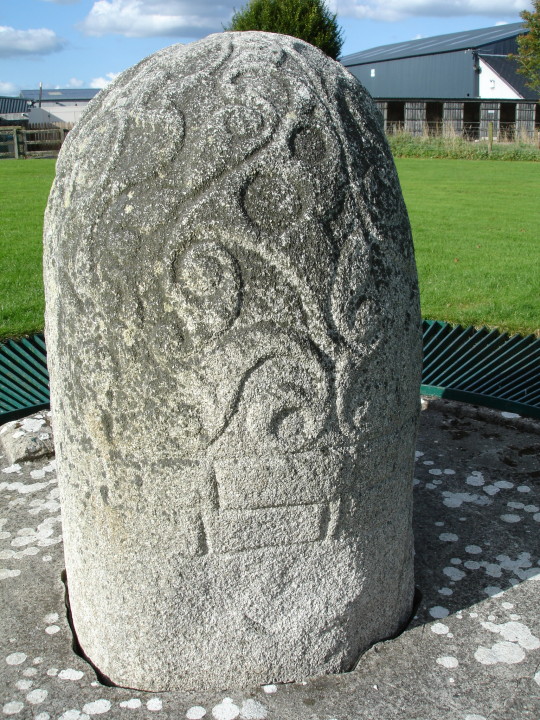
View On WordPress
#Ancient Celts#Archeologists#Bullaun#Celtic Art#Cloch an Tuair Rua#Co. Galway#France#Greece#Ireland#Iron Age#La Téne#Legend of the Celtic Stone#Loughrea#Newgrange#Sculpture#The Stone of the Red Pasture#The Turoe StoneEdit "The Turoe Stone"
20 notes
·
View notes
Text
#writing#amwriting#writers#creative writing#horror#prose#folk horror#writeblr#spilled ink#shorts#short story#horror fiction#alchemisland#neuralchemy#folklore#folk horror#mythology#bullaun stones#standing stones#paganism#megaliths#old stones#gothic#irish writers#writing community
0 notes
Text
Irish Cursing Stones
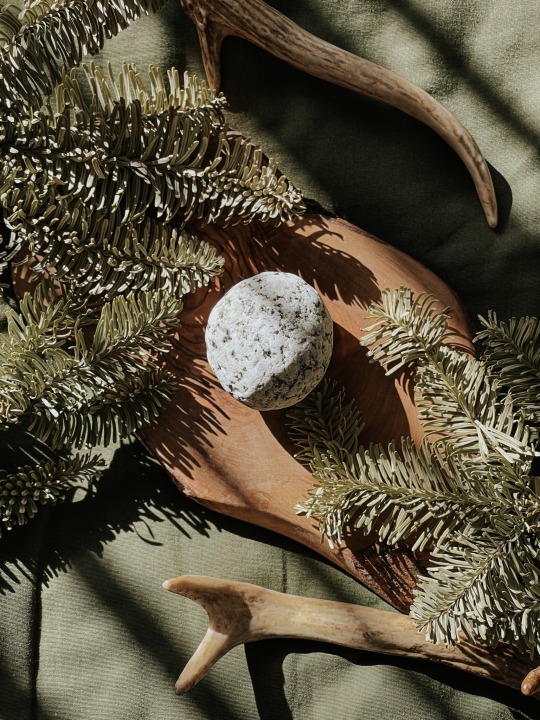
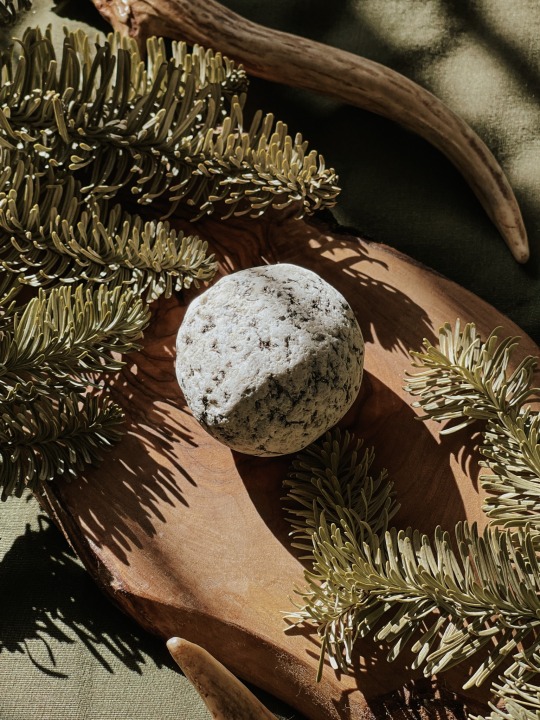
Ireland has a long history with cursing and one of my personal favorites to talk about are the Irish cursing stones.
Traditionally Irish cursing stones were used in part with a ‘bullaun’ (believed to mean bowl) which was a larger stone that had a rounded indent in its center that held water. Unlike with piseogs- where you can send anyone ill intent, its believed that cursing stones would only truly work if the curse was just, and if it wasn't then you would risk the curse coming back to you.
To use the cursing stone, you turn them “tuathal” or anti-clockwise while chanting an incantation (or a rosc) that would send out a curse. While some today use their own modern type of bullaun, I have seen others simply use the palm of their hand. I use rainwater in my bowl and whenever doing any curse I always have my hair down. I also like to store my stone in a dark place because I use it only for cursing and have a separate stone for blessing.
The stone in my photos above is one that I brought back from a recent trip visiting family. Normally I wouldn't let it touch the sun but I have yet to use it so this will be the last time it will see the light of day.
66 notes
·
View notes
Text
Helen Marie handmade christening gowns made in the traditional Irish style using top-quality Irish linen, satin and lace in Galway Ireland. Free delivery worldwide.
Website:
https://helenmarie.ie
Address:
Galboley, Bullaun, Co. Galway H62 X300
Phone Number:
087 629 8754
Contact Mail:
[email protected]
Business Hours:
Monday to Sunday : 9:00 am - 11:59 pm
1 note
·
View note
Text
Ireland's Priceless Treasure Hidden By Monks
One of the most exciting archaeological finds in the history of Irish art was unearthed on Tipperary's Derrynaflan Island by a man and his son using metal detectors.
— By Tracey Croke | 1st August 2022
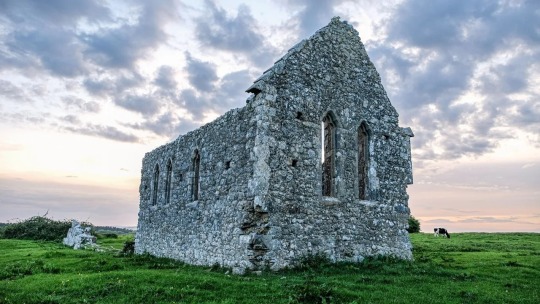
"Go up there and dip your finger in the holy water – it's always full," insisted the farmer on the way to Derrynaflan Island. I was lucky to bump into him as there was no sign to direct me along a stony track to this sacred spot, mostly known only to locals.
Derrynaflan is not a typical island. This tiny 44-acre, privately owned mound, in Ireland's biggest inland county, isn't surrounded by an ocean or a lake. Unusually, it pops from the Bog of Lurgoe in Tipperary's vast brown swampy peatlands like a vibrant green mirage. Nevertheless, by dictionary standards, an island it categorically is.
I'd come to this remote bogland to see where Ireland's earliest hermetic monks found solitude from the 6th Century. While most of Europe was reeling in the post-Roman disarray of the Dark Ages, the land of saints and scholars (as Ireland widely became known) bucked the trend by entering a remarkable golden age of scholasticism and artistic achievement, characterised by monastic settlements like Derrynaflan.
But what's especially interesting about Derrynaflan is the priceless buried treasure likely left here by the monks. Discovered just a few decades ago, it changed Irish law and turned out to be one of the most exciting archaeological finds in the history of Irish art.
Careful not to disturb the munching bullocks, I gently climbed a short 200m to the ethereal ruins that still crown the island today. At the top, I wandered into what was left of a 12th-Century abbey that replaced an earlier monastery. A soft apricot evening glow poured through pane-less windows on to a long-departed altar. Two stumpy stone vessels were all that remained. One – a medieval bullaun (bowl) stone – was indeed hollowed enough to collect the farmer's promised "holy" (rain) water. I agnostically blessed myself as instructed.
An information sign at the abbey revealed there's much more to Derrynaflan than first meets the ecclesiastical eye. Controversially, the little-known mystical landmass shot to international archaeology fame in 1980 when a father and son from the town of Clonmel, about 25km away, unearthed an intricately decorated cup and plate using hobby metal detectors.
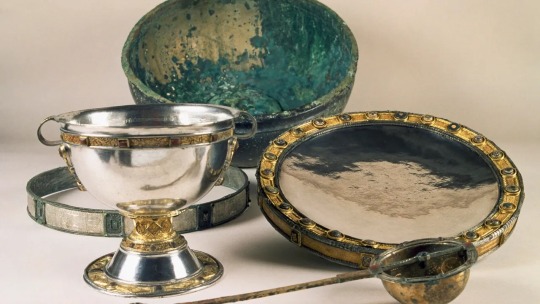
Uncovered in 1980, the Derrynaflan Hoard is one of the most exciting archaeological finds in the history of Irish art (Credit: National Museum of Ireland)
The "cup" was, in fact, a 9th-Century chalice. And the "plate", an 8th-Century paten used for holding the bread during the eucharist of Ireland's medieval church, confirmed Nessa O'Connor, curator and archaeologist at the National Museum of Ireland. "They are elite objects with a very, very high standard of craftmanship created at the highpoint in the early Irish church," she said.
The silver chalice and paten are decorated with outstanding examples of ancient Celtic goldsmithing, O'Connor explained. Fine interlaced gold-wire work called "filigree", illustrated on postage stamp-sized intricate art scenes around the edge of the paten, is in a style distinctive to Ireland. The paten is also the only example of its type to survive from early medieval Western Europe.
The combination of the objects is unique… it's a complete altar set
A wine strainer and stand (for the paten) completed a priceless hoard of Insular Art (shared art style in Ireland and Britain around 600 to 900 CE, heavily influenced by the expansion of the Irish monastic tradition). "The combination of the objects is unique… it's a complete altar set," O'Connor said, explaining that burying valuables was common during Viking raids and the dynastic turmoil of the 10th to 12th Centuries. "It looks like it was deposited deliberately [by the monks] at a time of high risk." Archaeologists have since meticulously surveyed the island and nothing else was found, she added.
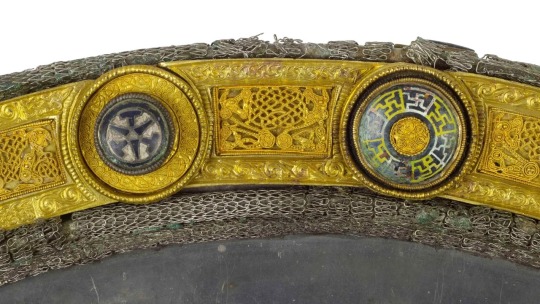
The silver chalice and paten (pictured) are decorated with outstanding examples of ancient Celtic goldsmithing (Credit: National Museum of Ireland)
Today, the Derrynaflan Hoard can be admired at the National Museum of Ireland in Dublin, along with other exceptional finds from the Insular Art period, such as the Ardagh Chalice, found in 1868 by a young man digging up potatoes near Ardagh, County Limerick. O'Connor noted that its artistry and style is comparable to the elaborately illustrated Book of Kells, which is "Ireland's greatest cultural treasure", according to Trinity College Dublin, where it is on display.
The natural conditions of boglands have proved to be freakishly good at preserving ancient artefacts. The low temperature, lack of oxygen and high acidity of the soil mean even organic matter can survive for thousands of years. A 3,000-year-old keg of butter was pulled out of an Irish peat bog. Bodies more than 2,000 years old have been found with hair and nails intact. However, before any get-rich-quick treasure-hunting thoughts rush in, Ireland has among the most stringent laws in Europe around metal detecting and excavation – and it was the Derrynaflan treasure discovery that tightened them, explained Sharon Greene, archaeologist and editor of Archaeology Magazine.
It means there isn't a legal hobbyist treasure-hunting scene in Ireland the way there is in other countries
A seven-year legal battle between the Derrynaflan detectorists, the landowner and the government, which went all the way to the Supreme Court, eventually determined that the treasure hoard belonged to the state. "It means there isn't a legal hobbyist treasure-hunting scene in Ireland the way there is in other countries," Greene explained. In the UK, specialist tour operators arrange treasure-hunting trips. "This is never going to happen in Ireland," she said.
The wrangling over ownership and monetary value of the Derrynaflan treasure resulted in practically a blanket metal-detecting ban in Ireland. Penalties for both unlicensed searching and digging are harsh. And any archaeological objects found by accident (ploughing for example) automatically belong to the state. However, Greene continued, nowadays, archaeological interest is less about personal financial gain and more about pride of place and finding that special connection with your past.
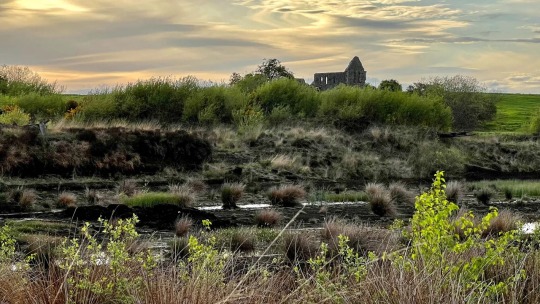
Derrynaflan Island is surrounded by the Bog of Lurgoe's swampy peatlands (Credit: Tracey Croke)
In this spirit, I'd ambled to Derrynaflan following a newly waymarked 9km loop from the Horse and Jockey Hotel in the tiny townland of the same name. The first 2km was on twisty backroads, where I met with one car, which, judging from its speed, wasn't expecting to meet me. But soon enough, I crossed a bridge onto new stony pathways created by a group of passionate locals during the pandemic to make the perilous boglands more accessible. The island, which can be reached via an informal path, 200m or so off the main route, came into view after a couple of more kilometres.
After decades of industrial peat-cutting to fuel Ireland's stoves, the bog was no longer nature's healthy blanket of saturated spongy moss it once was. But, several years since harvesting ended (due to green policies), it was encouraging to see flora gaining confidence over a largely drab landscape.
"Nature will take it back very quickly," said Eoin O’Connell, an agricultural science and biology teacher at a nearby secondary school whom I met en route. O'Connell often walks to Derrynaflan from his family farm in Lurgoe, a townland several kilometres away that the route passes through on the way back to the Horse and Jockey.
Grasses, heather and rows of gorse – a thorny shrub with bright yellow, vanilla-scented flowers – had taken root. Fingers of water, which will one day expand to become a flood plain, beckoned with soft reflections. "Slowly it will go from being a carbon releaser to a carbon sponge," O'Connell said. Wetland birds, now gathering in bigger numbers, pierced an eerie silence. "I've heard a cuckoo, he added. "That's rare."
Liam Fleming, another local who is interested in finding hidden heritage, started Tipperary community walking group Siul Eile (meaning "another walk") with a few people in 2016. It has since grown to 5,000 participants. Visitors can join regular walks (including the Derrynaflan Loop) free of charge. Fleming, who recently received a county honour for his sustainable social enterprise, said, "We take pride in looking after monuments and trails, but we also bring people together and share stories with each other."
Getting There:
The 9km route, which passes close to Derrynaflan island, isn't clearly signposted yet. Landowner permission is needed to visit the island, so it's best to go with a local walking group or enquire at the Horse and Jockey Hotel.
Derrynaflan Island is also part of The Derrynaflan Trail, a self-guided driving tour that explores the sacred places of Tipperary's Slieveardagh Hills. The accompanying audio guide tells stories of saints, scholars, sinners, Norman warlords, Viking battles and powerful nobles through heritage sites spanning 15 centuries.
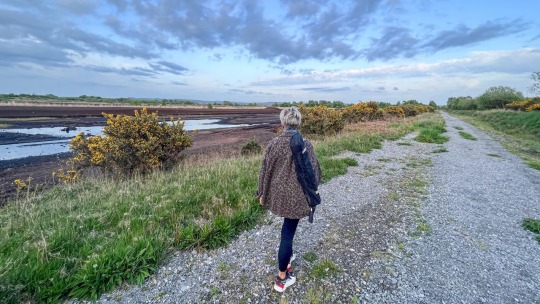
The island can be accessed via a newly waymarked 9km loop from the Horse and Jockey Hotel in Derrynaflan (Credit: Tracey Croke)
The Irish countryside has one of the densest concentrations of surviving archaeological monuments in Western Europe. "There are other bog islands and ancient monastic sites peppered all over the place," said Greene, who believes heritage sites should be accessible to everybody. While the vast majority of Ireland's 150,000 or so recorded archaeological monuments are on private land (needing permission from the landowner to visit), communities are successfully accessing their local ancient sites, such as megalithic tombs, monasteries, castles, stone circles and battlefields, through the Heritage Council's Adopt a Monument programme.
Visitors will never be far from a community's special pride of place that links it to the past. Since many of these hidden nuggets are often beyond even Google's search prowess, Greene and Fleming both recommend relying on the more traditional way of "enquiring locally" about ancient sites of interest. This means "asking what the go is" at a hotel, a shop or a pub in the area.
In Killenaule, a small town about 9km from Derrynaflan, where you can still get your groceries and a pint of draught Guinness in the same store, people will happily tell you everything you need to know about their beloved treasure island and how you can get there. Expect the lowdown to be wrapped in legendary banter and generations of folklore. But that's another cherished story for locals to tell.
0 notes
Photo

‘International PARK(ing) Day’ . . Known as The Holy Stone of Dingle or Bullaun, this boulder is a monster, measuring 3.5 m long by 1 m wide. It has been suggested that it might be a glacial erratic deposited here by retreating glaciers. There are a total of seven bullauns on the upper surface which were probably used for grinding grain. . #dingle #thislandisyourland #bullaun #bullaunstone #wildatlanticway #irishnature #sweeneylandscapedesign #tourismireland #nature #carpark #landscape #carparkspace #rock #ireland #natural #Irelandtourism #landscapespecialist #boulder #bmw #streetscape #internationalparkingday #worldparkingday (at Dingle, Ireland) https://www.instagram.com/p/Bn-knIclMzW/?utm_source=ig_tumblr_share&igshid=7jffr7uifyen
#dingle#thislandisyourland#bullaun#bullaunstone#wildatlanticway#irishnature#sweeneylandscapedesign#tourismireland#nature#carpark#landscape#carparkspace#rock#ireland#natural#irelandtourism#landscapespecialist#boulder#bmw#streetscape#internationalparkingday#worldparkingday
1 note
·
View note
Photo
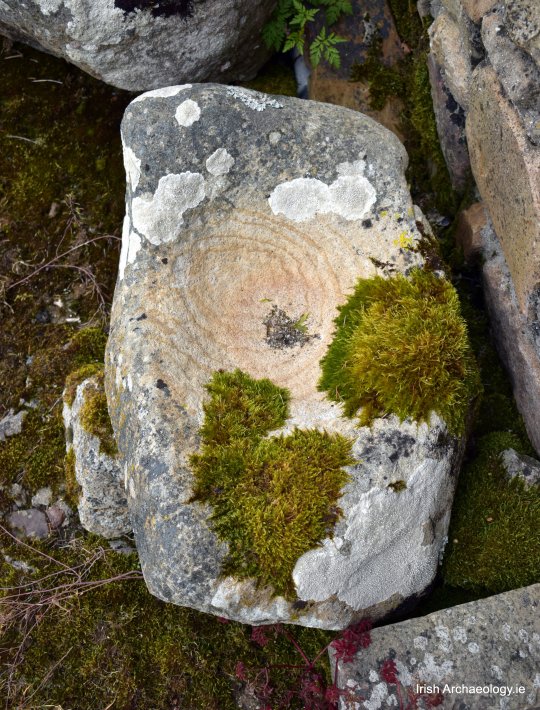

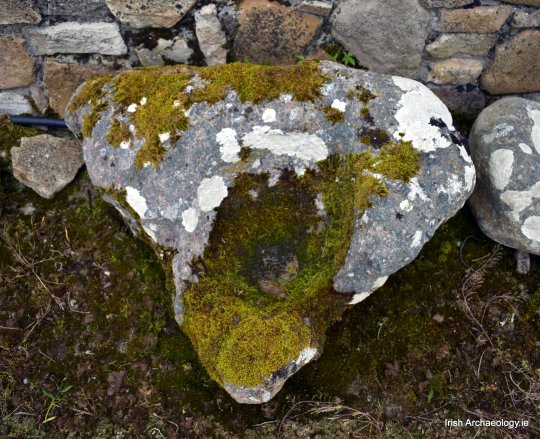
A pair of bullaun stones at Kilkeiran graveyard, Co. Kilkenny. These objects are believed to date from the early medieval period and are generally found close to ecclesiastical sites. They appear to have been used to grind down material, in similar manner to a pestle and mortar
337 notes
·
View notes
Text
“Deerstone” Bullaun Stone in Glendalough
Foto Antonio Íñigo

43 notes
·
View notes
Text
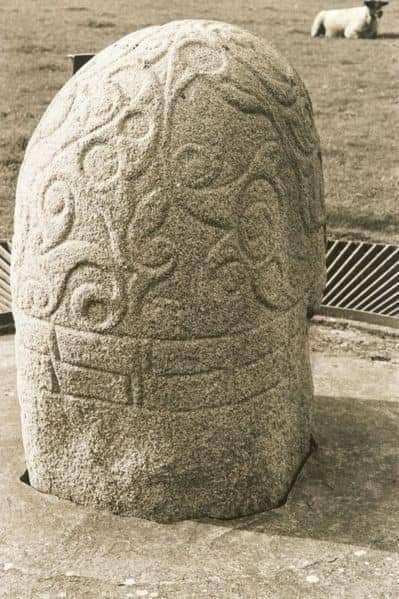
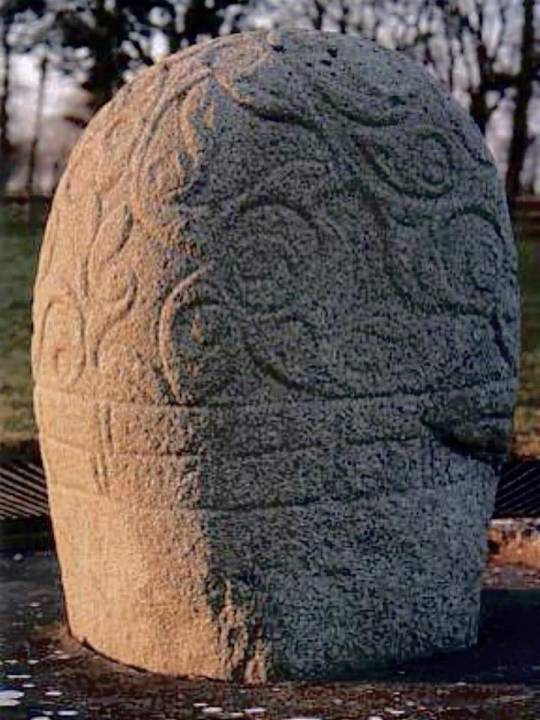
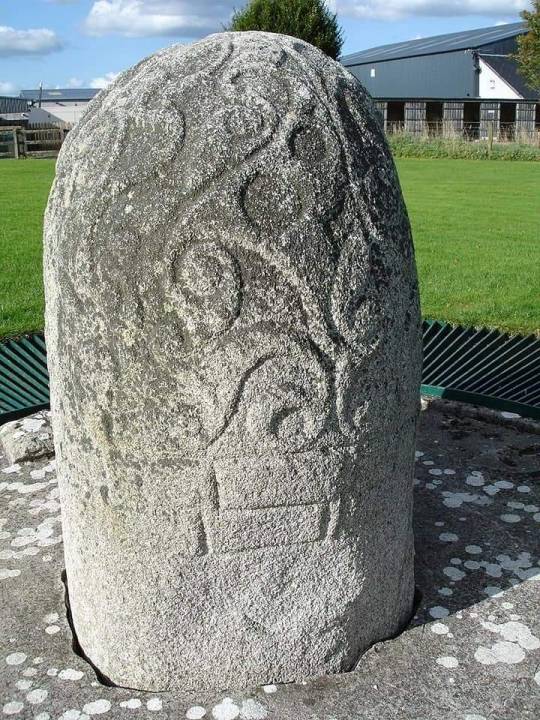
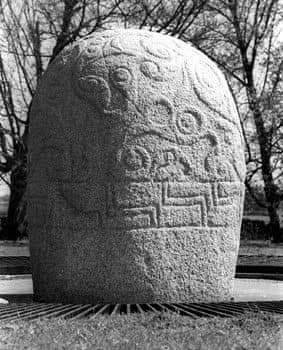
La Pierre de Turoe - Bullaun - Irlande
La pierre de Turoe se situe en plein centre du village de Bullaun dans le comté de Galwayen Irlande au nord de Loughrea.
La pierre est exposée en extérieur, sur une pelouse protégée en face de Turoe House. Scellée dans un socle de béton, elle est considérée comme un petit trésor historique. La moitié supérieure de la pierre est alors recouverte de gravures celtiques, et alternes ainsi spirales et ornements organiques. Les gravures sont fines, et d’une profondeur moyenne de 3cm.
Bien que détériorés par les années, les motifs sont encore nets et reconnaissables. D’après les chercheurs, la pierre ne viendrait pas de Bullaun, mais aurait plutôt été gravées au néolithique dans la campagne irlandaise près du village de Bullaun , avant d’être déplacée dans le centre, pour mieux la protéger.
https://www.guide-irlande.com/sites-touristiques/turoe-stone/
5 notes
·
View notes
Photo
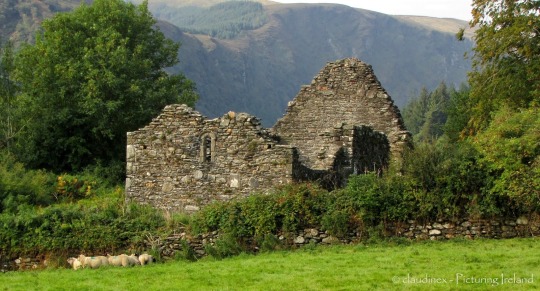
Our Lady’s Church, Glendalough, Ireland
St. Mary's Church
This church is also known as 'Our Lady's Church' and is one of the earliest churches in the valley. It dates from the 10th century and was built separately outside the once walled enclosure. It was probably built for the nuns of the community and exclusively used by women. The church has a few interesting and unusual features, like an x-shaped cross incised on the underside of the massive lintel stone of the west doorway and two carved heads above the east window, as well as a bullaun stone built into the base of the altar.
0 notes
Text
The Turoe Stone
The Turoe Stone sculpture is a masterpiece of Irish Iron Age art and normally stands in the village of Bullaun near Loughrea, Co Galway. It had been moved in the 1850s from its original location near the Rath of Feerwore, an Iron Age ring-fort structure, at nearby Kiltullagh. The stone is currently off site and in the hands of the Office of Public Works for essential remedial work and unavailable…

View On WordPress
#Ancient Celts#Archeologists#Bullaun#Celtic Art#Cloch an Tuair Rua#Co. Galway#France#Greece#Ireland#Iron Age#La Téne#Legend of the Celtic Stone#Loughrea#Newgrange#Sculpture#The Stone of the Red Pasture#The Turoe StoneEdit "The Turoe Stone"
34 notes
·
View notes
Photo

It is a lovely day to explore your 5km so we visited Old Kyle Cemetery. It is an early Christian foundation associated with St. Molua. It was once home to a Romanesque style church and fragments of this foundation can still be found there. There is also a couple of cross slabs, and a fine bullaun stone near the entrance. #knowyour5k https://ift.tt/3fWNQ78
0 notes
Text
What the Hell, Galway
When I wrote Notable Irish Toponymy, I had not realised that Muckanaghederdauhaulia had been dethroned as the longest single-word place name in Ireland. If you remember the post or know this place, you’ll know it’s in Galway.
In fact, five of the top five longest Irish place names are in Galway. They are now:
Bullaunancheathrairaluinn: Ballán an Cheathrair Álainn
Inishmore, Galway
Sruffaunoughterluggatoora: Sruthán Uachtar Log an tSamhraidh
Ballynahinch, Galway
Loughaunbarnaheskabaunia: Lochán Bairr na h-Eascaide Báine
Ballynahinch, Galway
Sruffaungolinluggatavhin: Sruthán Góilín Log an Tafainn
Ballynahinch, Galway
Templeancheathrairaluinn: Teampall an Cheathrair Álainn
Inishmore: Galway
The first one, Ballán an Cheatrair Álainn means “bullaun of the Four Comely Saints”. The Four Comely Saints, or an Ceathrar Álainn, was a collective name for Fursey, Brendan of Birr, Conall, and Berchán, four saints in the early Irish Christian church reported to have been buried on Inishmore.
The same goes for number five on the list—Teampall an Cheathrair Álainn, the temple of the Four Comely Saints.
As for the rest, there is only one that’s definitively translated:
Lochán Bairr na h-Eascaide Báine
Pool at the top of the white quagmire
Plughoge and Leabrannagh Mountain North, a townland in Barony, Co. Donegal tops the list for the longest multi-word place name in Ireland. Its Irish name is given as Sliabh Phlochóige agus Leadhb Reannach Thuaidh: which roughly gives 'Hollow Mountain and Starry Strip North' or, following its English name, 'Hollow and Starry Strip Mountain North'.
#gaillimh#connachta#áit go léir#suimiúil#dún na ngall#ulaid#naomh#reiligiún#sanasaíocht#tírdhreach#imeachtaí staire#imeachtaí-staire
0 notes
Text
Prefab preschool plans for Bullaun parish hall
The project will also involve upgrades to the sewage treatment system on site in order to accommodate the increased usage. Galway County Council ...
from Google Alert - sewage system https://www.google.com/url?rct=j&sa=t&url=https://galwaydaily.com/news/education/prefab-preschool-plans-for-bullaun-parish-hall/&ct=ga&cd=CAIyGjBmYTExMmY5ODc5OTYxMmI6Y29tOmVuOlVT&usg=AFQjCNHsz7M85m_4_RaNQrlWbgqCmjT2Gw
0 notes
Text
Cursing Stone
Cursing Stone There is in a neaby village a cursing stone with all the reverberations of deep time and old story. The Poetry Daily contemplates when story is not done...
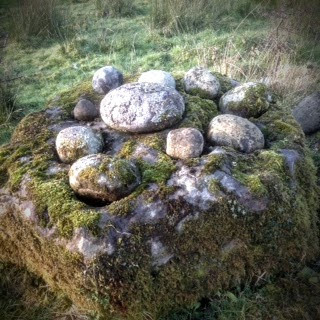
There is, on private land adjacent to the ruined St. Brigid’s Chapel in the townland of Kilinagh, a glacial erratic with nine bullaun stones placed in its hollows. We live in a geopark that is littered with these large rocks that the ice age slid down off Cuilcagh Mountain back in the mists of eons bygone. They were both first tools and material, as well as a part of nascent cosmology. This…
View On WordPress
0 notes